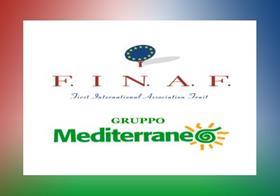
Two of Europe's leading groups of fruit and vegetable producer organisations, Finaf in France and Gruppo Mediterraneo in Italy, have decided to merge.
The move is set to lead to the creation of what is being described as a European 'colossus', representing more than 15,000 growers producing just under 1.9m tonnes of product and generating around €1.4bn in marketed goods per annum.
The decision to form the new super-association, which will retain the name Finaf (First International Fruit Association), was apparently prompted by increasing difficulties and challenges faced by the agricultural sector in general and the fresh produce sector in particular, as well as by the detrimental effect that the recent economic downturn has had on demand for, and sales of, fresh fruit and vegetables across Europe.
According to Finaf's leaders, merging the two associations offers the chance to consolidate supply and, in doing so, maintain a better level of competitiveness on global markets.
'The birth of the new APO Finaf allows us to achieve significant economies of scale and to improve management efficiency further, guaranteeing better profitability for member growers,' commented existing Finaf president Roberto Cera and Grupo Mediterraneo president Enzo Treossi in a joint statement.
They added: 'Thanks to this merger, it will in fact be possible to develop important technical and operational synergies and to define common strategies among the 22 member producer organisations, thereby maximising the value of our production.'
Finaf has two members, namely Conserve Gard and Uniproledi, while Grupo Mediterranio comprises several Italian POs: Apo Conerpo, Verde Intesa, Apofruit, Conapo, PempaCorer, Alpo, Orogel Fresco, Cooperativa Modenese Essiccazione Frutta, AsIPO, Funghi delle Terre di Romagna, Agribologna Bologna, Il Tricolore, Moderna, Apol Industriale, Terra di Bari, Opera, Faro, BIO Orto, Codma and Acom.
The new Finaf association brings together producers supplying more than 100 different fruit and vegetable products, and represents 27 per cent of Italy's pear crop, 20 per cent of its kiwifruit, 14 per cent of its peach and nectarine output and 25 per cent of its processed tomato crop.
Within Emilia-Romagna, where it will be based, the new group will account for 45 per cent of the region's peach, nectarine and pear production.



